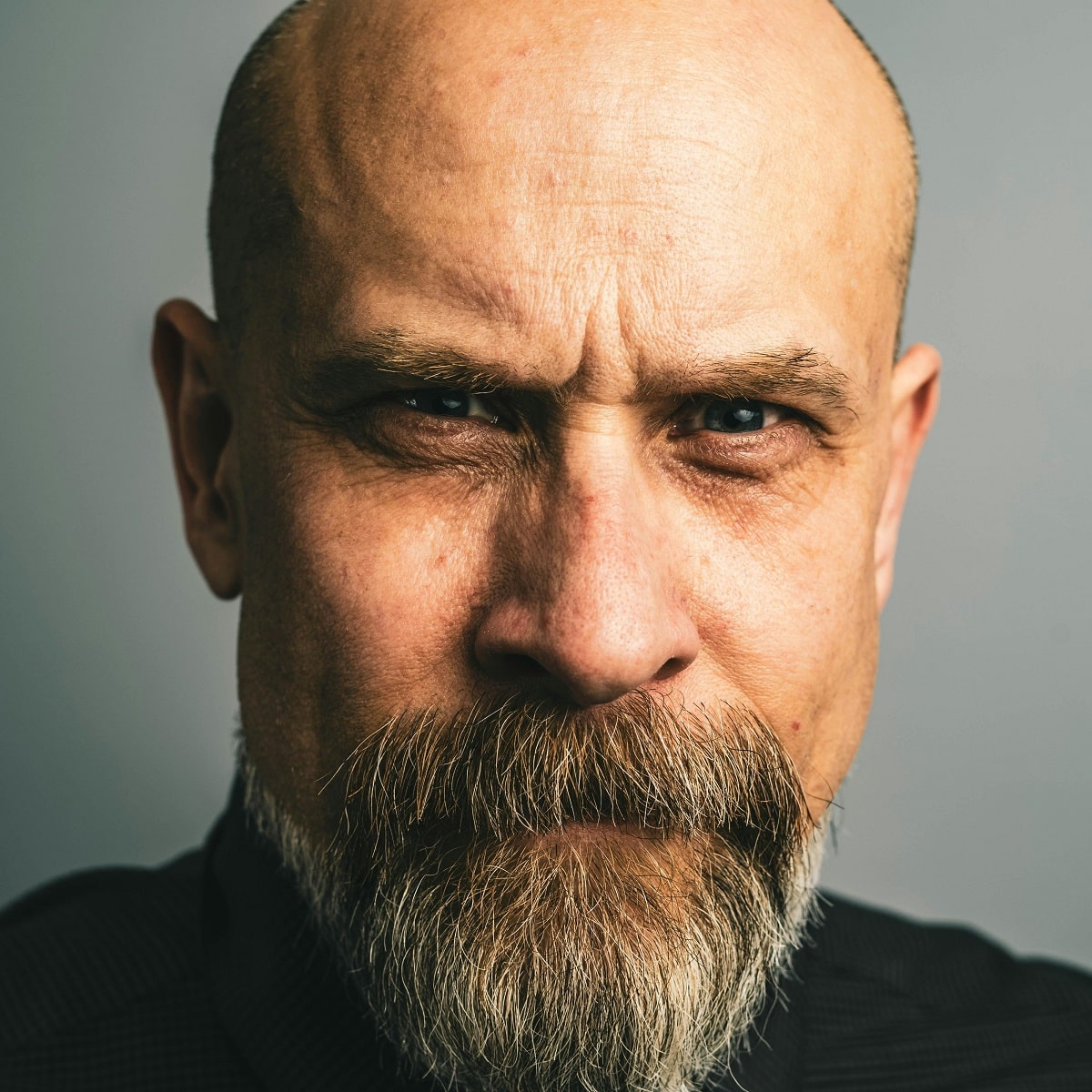1
HOME > Grooming >
UNDERSTANDING THE RISE IN FACIAL HAIR RESTORATION SURGERY
Written by Menswear Style in Grooming on the 22nd October 2024

Beard transplants are becoming increasingly popular in the UK, initially a lesser-known cousin of the more popular hair transplant, and now a trend driven by the evolving cultural landscape where facial hair is not just a fashion statement but a symbol of masculinity, identity, and even personal confidence. In the past, beard growth—or lack thereof—was simply accepted as a genetic lottery. Today, however, with advancements in hair restoration technology, those who struggle to grow a full beard have an option of restorative surgery. We spoke to the Beard Transplant experts My Hair UK to explore this growing trend, explaining why beard transplants are gaining popularity, how the procedure works, who might be an ideal candidate, and what the broader implications of this trend are in terms of self-esteem and personal identity.
The Rise of Beard Culture in the UK
Over the last decade, beards have transitioned from being a niche or “hipster” fashion accessory to a mainstream symbol of masculinity. Men from various backgrounds, professions, and lifestyles have embraced facial hair, with styles ranging from full beards to more subtle goatees or sideburns. Celebrities, from actors to athletes, have influenced this trend, further cementing beards as a desirable trait for many men. However, not everyone is blessed with thick, even facial hair. Some men struggle with patchiness or sparse growth due to genetics, hormonal imbalances, or even scarring. For those who feel that their beard—or lack thereof—doesn’t align with their desired self-image, beard transplants offer a solution.

What is a Beard Transplant?
A beard transplant is a surgical procedure where hair follicles are transplanted from one part of the body, typically the back or sides of the scalp (areas known to have stable hair growth), to the face. The technique used is similar to that of hair transplants for the scalp, with two primary methods being Follicular Unit Extraction (FUE) and Follicular Unit Transplantation (FUT).
- FUE involves extracting individual hair follicles from the donor area and implanting them into the beard area.
- FUT, on the other hand, involves removing a strip of tissue containing hair follicles from the donor site, from which the individual follicles are then separated and transplanted.
Both techniques have their merits, but FUE is generally favoured for beard transplants due to its precision and less invasive nature.
Why Are Beard Transplants Gaining Popularity?
Cultural Influences: As mentioned earlier, beards have become a significant symbol of masculinity in modern culture. For many men, a full beard is seen as a mark of maturity, strength, and even sophistication. In a world where image can significantly influence personal and professional opportunities, a well-groomed beard can enhance a man’s appearance and boost his confidence.
Social Media and Celebrity Endorsements: Platforms like Instagram and TikTok are filled with images of impeccably groomed men sporting full, luscious beards. This constant visual reinforcement, combined with endorsements from celebrities and influencers, has led to an increased desire for men to achieve a similar look. Celebrities like David Beckham and Chris Hemsworth, known for their iconic facial hair, have undoubtedly played a role in making beards desirable.
Increasing Availability of Cosmetic Procedures: Cosmetic surgery, including beard transplants, is becoming more accessible and affordable. As more clinics offer specialised hair restoration procedures and awareness grows about the options available, more men feel empowered to take control of their appearance. Additionally, with the stigma around cosmetic procedures diminishing, men are more comfortable seeking treatments to enhance their looks.
Improved Techniques and Results: Advancements in hair transplantation technology have made beard transplants more effective and natural-looking than ever before. Surgeons now have the tools and expertise to carefully match the direction and angle of hair growth, ensuring that transplanted beard hair blends seamlessly with existing facial hair. As word spreads about the high success rates and minimal downtime, more men are opting for this procedure.
Restoring Confidence: For men who struggle with patchy beards or sparse facial hair, a beard transplant can offer a transformative boost in confidence. Whether it’s for personal satisfaction or to feel more aligned with societal standards of masculinity, the psychological benefits of a successful beard transplant can be profound.

The Procedure: What to Expect
A beard transplant typically involves a consultation to assess the patient's hair growth patterns and discuss the desired outcome. A detailed plan is drawn up, including the areas where the hair will be transplanted and the method that will be used. The procedure itself can take anywhere from 3 to 8 hours, depending on the size of the area being treated. After the procedure, patients can expect some swelling, redness, and scabbing in both the donor and recipient areas. The transplanted hair will initially fall out after a few weeks, but this is part of the normal hair growth cycle. New hair will begin to grow in around 3 to 4 months, with full results visible within 8 to 12 months. One key factor in the success of a beard transplant is the density of the donor hair. For men with ample hair on the back or sides of their scalp, this procedure tends to have very high success rates. However, for men with thinning hair, particularly those who have undergone previous hair transplants for scalp hair, donor hair availability may be a limiting factor.
Who is a Good Candidate for a Beard Transplant?
While the idea of waking up with a thick, even beard is appealing to many, not everyone is an ideal candidate for a beard transplant. Ideal candidates include:
- Men with Patchy or Sparse Beard Growth: The most common candidates are men who naturally have uneven or thin facial hair and wish to achieve fuller growth.
- Men with Facial Scarring: Beard transplants can be used to cover scars from accidents, surgery, or burns, helping to restore a natural appearance.
- Men in Good Health: Like any surgical procedure, beard transplants are best suited for individuals in good overall health. Conditions that affect healing, such as uncontrolled diabetes or certain autoimmune disorders, may complicate recovery or affect the final outcome.

Are There Any Risks Involved?
As with any surgical procedure, there are potential risks to be aware of, although they are generally minimal with beard transplants. Common side effects include swelling, bruising, and temporary numbness in the donor and recipient areas. In rare cases, infections or scarring may occur, but these are typically avoidable with proper aftercare.
The Psychological Impact: More Than Just Vanity
While some may dismiss beard transplants as a vanity-driven trend, it’s important to recognise the psychological benefits that come with this procedure. For many men, the inability to grow a beard affects their self-esteem and body image. In a society where facial hair is often equated with masculinity, men with patchy or sparse beards may feel less confident or even emasculated. Beard transplants offer these men the opportunity to take control of their appearance and, in turn, their self-worth. The boost in confidence that comes from feeling good about one’s appearance can have far-reaching effects on personal relationships, career success, and overall well-being.
The Broader Trend of Male Cosmetic Procedures
The rising popularity of beard transplants is part of a broader trend in male cosmetic surgery. Men are increasingly seeking out procedures that were once considered the domain of women, such as Botox, fillers, and liposuction. The stigma around men enhancing their appearance is gradually fading, and as a result, more men are opting for treatments to address areas of insecurity. Hair transplants, both for the scalp and beard, are leading the charge in this growing market. With the availability of more subtle, natural-looking results and the normalisation of cosmetic procedures, it’s likely that the demand for beard transplants will continue to rise in the UK and beyond. The rise of beard transplants in the UK reflects changing attitudes towards masculinity, self-image, and cosmetic surgery. With more men seeking control over their appearance and a growing acceptance of aesthetic procedures, beard transplants are becoming a popular solution for those looking to enhance or restore their facial hair. While it may seem like a cosmetic choice on the surface, the impact on self-esteem and confidence can be profound. As this trend continues to grow, it's essential that men considering a beard transplant seek out qualified, experienced surgeons to ensure the best possible outcome. With the right care, a beard transplant can offer a long-lasting, natural-looking solution that helps men feel more confident in their appearance.
Trending
2
3
4
5
6
7
8
9
10









